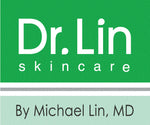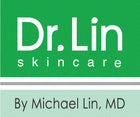Acne in Pregnancy
Many women that suffer from acne when pregnant aren’t sure where to turn. They want to clear up their skin, but are limited with what products they can use and medications they can take. Jonette E. Keri, M.D., Ph.D., of the University of Miami Miller School of Medicine discusses the options available to pregnant patients. Along with discussing expectations, Dr. Keri’s treatment algorithm includes grading the patient’s acne, using whichever grading system one prefers. “If acne is moderate to severe, consider systemic medications,” and always document discussions. Her regimen typically includes mild nonabrasive washes containing glycolic acid, plus topical azelaic acid and clindamycin and oral antibiotics. She also recommends a physical sunscreen.
When counseling patients, Dr. Keri covers FDA risk categories. She starts by outlining the former FDA risk categories – A, B, C, D, X and N. Under the 2015 Pregnancy and Lactation Labeling Rule, “The new FDA categories are ‘safe in pregnancy,’ ‘not safe in pregnancy’ and ‘uncertain (safety in pregnancy).’ They’re trying to put new medications into the new categories, and older medicines are being grandfathered in.” Many doctors still use the old categories for guidance regarding acne medications because they find them helpful, said Dr. Keri. “And most acne medicines are old, and have the letters assigned to them.”
Among first-line topical medications, she recommended those in category B (presumed safe based on animal studies) versus category C (uncertain safety – human and animal studies show no adverse events). Topical agents in the former category include azelaic acid, clindamycin, erythromycin and metronidazole.
Category C agents generally considered safe in pregnancy include the following:
- Benzoyl peroxide – Systemic absorption is minimal, and benzoyl peroxide is metabolized to benzoic acid (a food additive) in the skin, according to a review.
- Salicylic acid – Low-dose aspirin is used to treat preeclampsia. The key in acne is to use low concentrations over limited body surface areas, said Dr. Keri.
- Topical dapsone – Oral dapsone has been used to treat dermatitis herpetiformis in pregnancy, according to a report; topical dapsone is likely safe but studies are lacking.
Topical retinoids require caution. With tretinoin there have been case reports of anomalies in ear development and with adapalene there have been reports of the absence of one or more eye. There is also evidence showing that tazarotene should not be used in pregnancy. “We don’t like to use topical retinoids in pregnancy. But if a patient has been exposed to a topical retinoid, you can tell them based on a retrospective study there’s a very good chance it will have no effect on the baby.”
The best and most widely used example of a category N (not classified) topical is glycolic acid, said Dr. Keri. It is believed to be safe in pregnancy, as only a minimal amount (up to 27% in an in vitro study) is absorbed systemically.
Category A systemic medications include zinc supplements, recommended at 30-200 mg daily. Although stomach upset can occur, one study shows no fetal harm from 75 mg daily of elemental zinc. Excessive zinc amounts, however, can lead to low copper levels.
Category B systemic medications that have been used safely in pregnant patients with acne include cephalexin, cefadroxil, amoxicillin, azithromycin and erythromycin. Erythromycin estolate can be associated with liver problems in 10-15% of pregnant patients with prolonged use.
So be careful when using products during pregnancy. Though many common acne-fighting ingredients should not be used when pregnant, there are some Category B products. Know your options, always check the label, and be sure to consult with your doctor.


Leave a comment